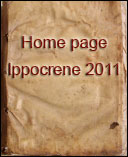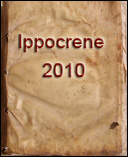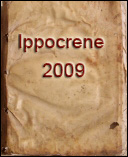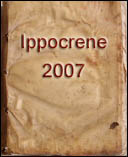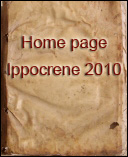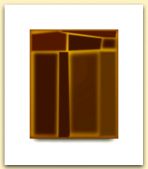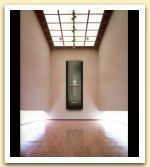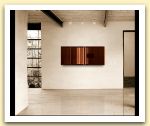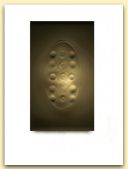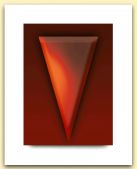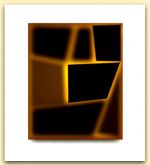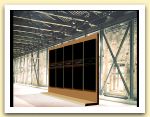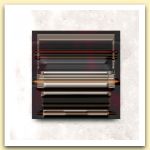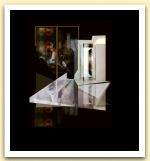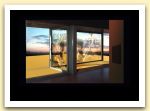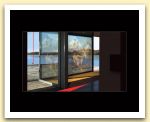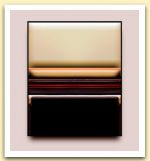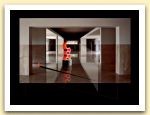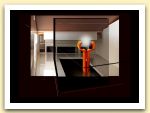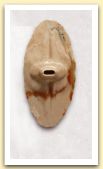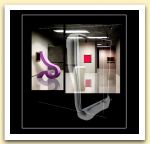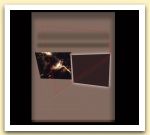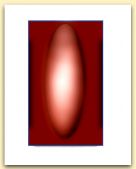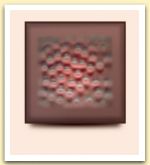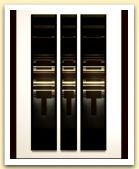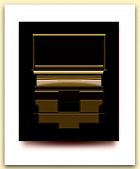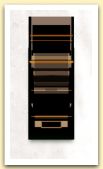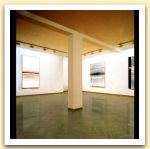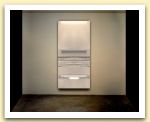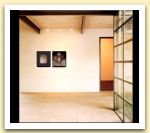| ANDREA VIZZINI |
|
Comments People who think about art these days cannot ignore the fact that their reflections have to include the art of the entire twentieth century. The origins of what led to the many individual phenomena and their various interconnections become ever more clear. One begins to identify the role that art has played in this century and, naturally, the one it takes on today. One can look back and recall the new point of departure from which art took off in the first decade of the twentieth century. New means began to take the place of those that had preceded them, and what had until that time been the simple elements for creating art - point, line, surface, color - became they themselves the subject of the work. Let’s direct our attention, however, to the philosophical and psychological premises as well, including the relativity of all the phenomena. We know that our society was no longer the same as it once was after the first and second world wars. In particular, we still have the impression of the point from which art took off after the second world war: the new larger pictorial spaces and the liberation of the color that, little by little, accompanied the new perception of visible reality. The concept of the individual, of the individual as an indivisible being, was challenged. After the war, everyone began to participate in everything, to be part of the whole, of the world, of the planets. Paul Klee himself began to speak of the ‘planetary style’. I am about to consider the work of Andrea Vizzini from two points of view. First of all, it is the most important European attempt to use art, to use the means of art, as a way of facing our world and the times in which we live, with our particular way of thinking, with our intuition, or, more succinctly, with our complex awareness. Vizzini is committed, on the one hand, to using art to put the whole in order, to creating balanced and aesthetic information out of the many intricate influences. On the other hand, he proves himself to be genuinely European when, as a way of trying to protect cultural differences and identity, he counter-proposes the many heterogeneous fields of reasoning and sensorial perception against the international trend toward simplification and a new and increasingly trivial symbolism. Allow me first, then, to consider the very notion of ‘order’. In an already well-known statement Vizzini has, among other, declared: "I feel like I am a bottomless container." He does, in fact, take everything in, from both inside and out. As an artist of the European school, however, that influence doesn’t leave him cold. There are artists who clearly experience a sensation similar to this bottomless container, yet don't seem to want to confront it and find it possible to move, instead, toward works of graffiti. Vizzini tackles all the trends that flow toward him, absorbing them. His versatile mind has the aesthetic means to help us put both the feelings and the experience stored into new contexts, which can be understood by looking at his works. Vizzini cannot help but create these means. He can’t stand the idea of an easy recourse to geometry, to color field paintings or collages, or simply to forcing everything onto a flat surface. He has had to create a new multi-form reality, which has given way to constellations that juxtapose disparate means and facts. The ability to order things is by far the most enormous artistic endeavor he has taken on. Going through his works, again and again, we find original if not audacious solutions to the problem of putting things in order. Vizzini is not only capable of constructing – as are the Constructivists – paintings composed of lines and surfaces, he also adds the dimension of the depth of imagination. He presents the viewer with the sight of sensual impressions and stimulates their emotions, while, at the same time, showing the vast capacity of logic. He provides an inner balance. His structures of order are networks and reflections on networks. Time after time, Vizzini confronts the problem of letting his technique be influenced by his psychic and mental vitality. He must paint what he thinks and what he feels. In this respect, the combination of oils, acrylics, and a mixture of other materials and techniques has a symbolic effect that is a sign of the identity of the means themselves and their meaning. This too is an aspect of order: the fact that the subject, the means, and the artist who interprets them all work together. Vizzini's art demonstrates a striking link between mental and material phenomena. The second aspect of the art of Vizzini is his choice to move away from simplification, from trying to astonish, and from manipulation, together with how he shows the loss of individuality. This is why, despite the harmony of the ordered components, his paintings are not just simple and beautiful, not mere combinations of inviting colors and interesting materials. They are not intended to be simply aesthetically pleasing, but to provoke a discriminating dialogue. The potentially stunning effects of normal perception are countered by what has become a characteristic criteria of his work: the use of an unusual, three dimensional scenario, the contemplation of which can be provocative, even to the point of being irritating. It goes against our habit of perceiving things within certain contexts by creating another setting we don't expect. This is a position within the exterior reality that, in Europe, led to geometric modernism, to surrealism, and to the distortions of pop art. What we are dealing with are techniques that are sustained by philosophies of life. Vizzini acts as a focal point in which the experiences of the European artists are concentrated. Undoubtedly, he is not the only one who does so. There are other artists on other continents that find themselves in similar roles. In Vizzini, however, there is a particular commitment to following through on all of the details that he, as a bottomless container, holds, making note of them and keeping a check on their possibility of 'bringing things into focus'. How will the viewer act in front of these works? I have already spoken of provocation, the provocation to enter into a dialogue. I think that, today, people need to be prompted into shifting from the role of a simple spectator to that of an active observer. Today's easy consumption of information – all day every day – keeps most people from the making the effort to observe something carefully and from the enjoyment of seeing and contemplating things that are within their reach as total or complete human beings. Even when they contemplate works of art, all too many people generally stop after just a brief interlude of time. They respond to visual objects superficially and no longer know to how to change a visual object into a visual event. It might be possible to get an overall impression of Vizzini's works in a brief span of time. The scenarios usually give a general impression. The first impression, however, could be that of a dominant color. At times, Vizzini incorporates a sort of thorn in his works. These are often small details that take on a precise iconic or geometric form. From my experience with some of Vizzini's works, I know that one's gaze is captured by these details, like, for example, a fish on a hook. I'd like to think that the artist creates these important elements for himself as well, given that – in the way they capture one's vision, not unlike a hook - they keep the information to which they refer from running through the bottomless container. One could never, therefore, reproach Vizzini of ‘allowing you to get quickly to point or of letting you slide along the surface of his works'. On the contrary, he knows how to keep you engaged in an unusually inviting way. His paintings contain moments of tension that have a generative power. In other words, when these works are observed carefully, they can provide a sense of regeneration. The more one looks at Vizzini's paintings, the more they prove to bridge realities that can be experienced with what our imagination constructs. These bridges are formed through our ‘reading’ of the works. Vizzini shows the careful viewer how to proceed in reading these works, so as to help them learn how to establish a mutually reflective relationship between imagination and experience. We need these instructions because knowledge and what can be converted in reality are increasing at an unimaginable speed. Perhaps only art, an art like Vizzini's, for example, is capable of offering a useful synthesis? Comments on the work of Andrea Vizzini EUGEN GOMRINGER _____________________________________________________________________ Eugen Gomringer - biography
1953 Gründung der Zeitschrift „Spirale“ mit Marcel Wyss und Diter Rot. Erste Gedichte der „konkreten poesie“, mit denen Gomringer zum „Vater der konkreten poesie“ (Emmet Williams) wurde. 1954-57 Sekretär von Max Bill an der Hochschule für Gestaltung, Ulm. 1959-67 Werbechef der SIA, Schweizer Schmirgel- und Schleifindustrie AG in Frauenfeld (CH). 1962-67 Geschäftsführer des schweizerischen Werkbundes Zürich (CH). 1967-85 Kulturbeauftragter der Rosenthal AG, Selb (D). Emeritierter Professor für Ästhetik an der Staatlichen Kunstakademie Düsseldorf (D). Intendant des Internationalen Forums für Gestaltung IFG Ulm (D). Seit 1991 Honorarprofessor für Angewandte Kunst an der Fachhochschule Zwickau, Abteilung Schneeberg (D). 2000 Gründung des „ikkp – institut für konstruktive kunst und konkrete poesie – archiv eugen Gomringer“, Rehau (D).
Seit den 50er Jahren Veröffentlichungen zur „konkreten poesie“ und Kunsttheorie. Zahlreiche Vortragsreisen in Süd- und Nordamerika, Afrika und Europa. Veröffentlichungen u.a. „Konstellationen“ (1953), „Worte sind Schatten“ (1969), „Himmel, Erde, Frankenland“ (1981), „Zur Sache der Konkreten“ (1986), „Kunst stiftet Gemeinschaft“ (1993), „Zwei Generationen Konkrete Poesie“ (1993), „Visuelle Poesie“ (Herausgeber, 1995). Seit 1995 Gesamtausgabe seiner Werke in 4 Bänden, Edition Splitter, Wien. Mitglieder der Akademie der Künste, Berlin
|
| Pros. > |
|---|
